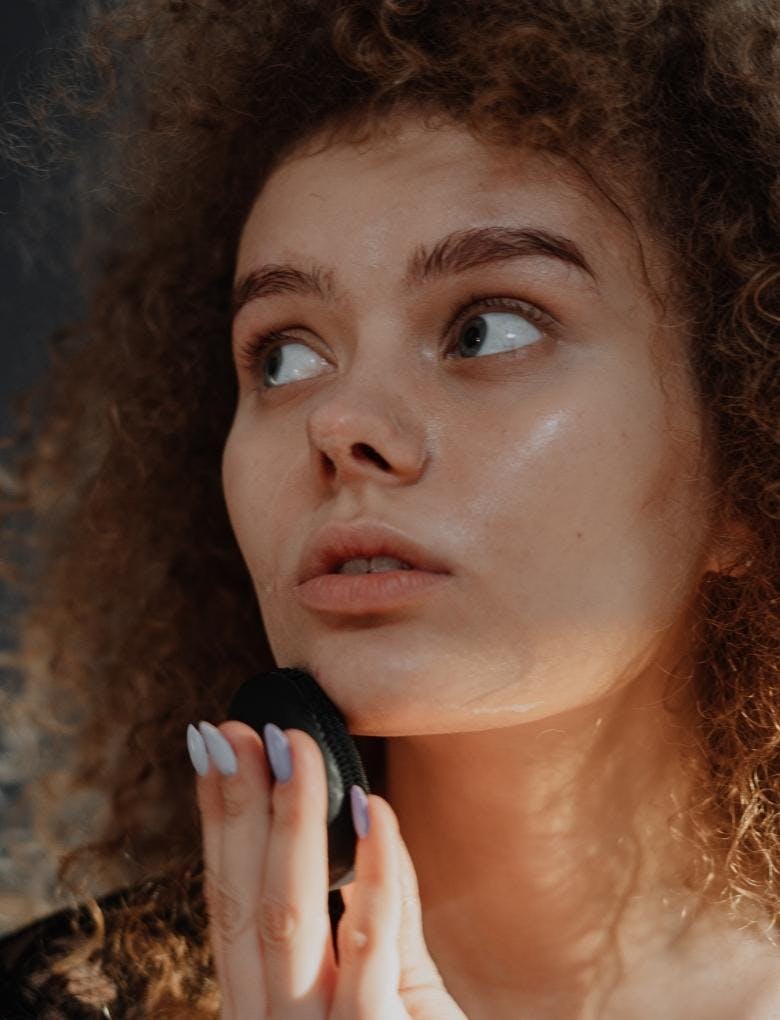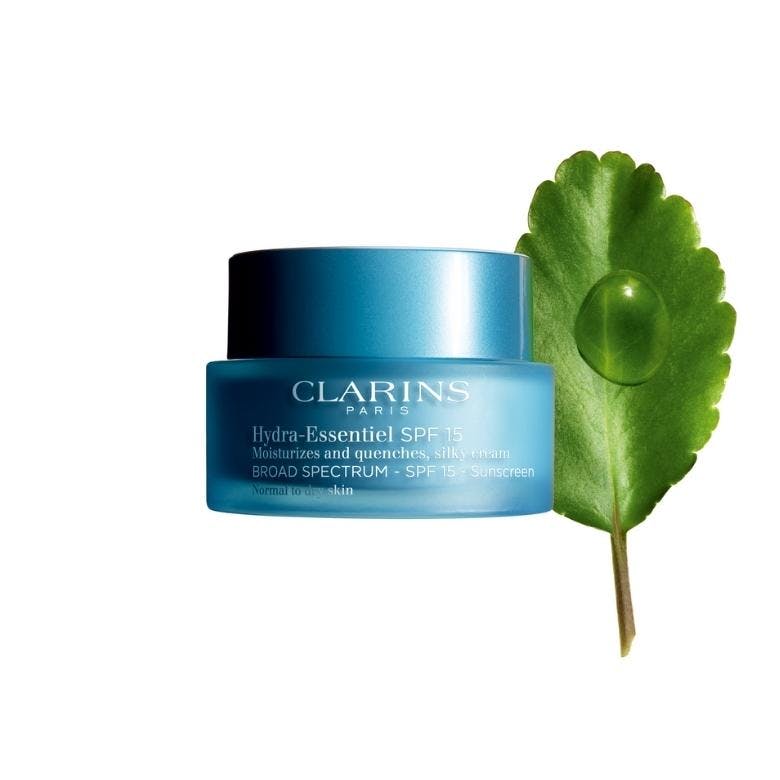What Is Slugging? Expert Advice On The Viral Skincare Trend
6 minutes read
When you think of ‘slugging‘, healthy skin may not be the first image that comes to mind. But ICYMI, slugging is one of the most popular skincare trends on social media right now.
Reddit, Instagram and TikTok users worldwide have been raving about its benefits, hailing it as the solution for many common skin woes: dryness, skin barrier damage, dehydrated skin… But is it worth the hype? Beauty Daily investigates.
What is slugging?
It’s an overnight treatment that involves coating your skin with an occlusive after applying all your other skincare products. An occlusive is an ingredient that moisturises the skin by creating a physical barrier on it. This prevents transepidermal water loss. Various popular skincare ingredients like petroleum jelly, mineral oil, silicone, dimethicone, waxes, and lanolin are occlusives.
Transepidermal water loss “is the loss of water from the skin into the surrounding environment,” explains Dr Alia Ahmed, Consultant Dermatologist, Frimley and Barts Health NHS Trusts. “This can be aggravated by a disrupted skin barrier (largely due to genetics, ongoing inflammation or associated dermatological conditions), dry weather which sucks water out of the skin or contact with skin drying chemicals like chlorine in swimming pools.”
Using an occlusive on top of your other skincare is meant to ‘seal everything in’ and keep moisture trapped.

Where does the slugging trend come from?
The trend seems to have its origins in a 2014 post on Reddit titled ‘I have turned myself into a slug’. The post details the author’s experience trying to treat their dry skin following an isotretinoin treatment.
It reads: “I noticed that Vaseline was on sale at our local pharmacy, and ended up buying a couple of jars. I later looked up the primary ingredient (petrolatum) and noticed that it was capable of blocking 99% of water from leaving your skin, which is more than any other moisturiser! … I got a bit carried away and now my entire body … is covered in Vaseline.”
Now, it has become a popular social media trend – #slugging has 310 million views on TikTok alone.
There are also other cultural sources that could have inspired the trend. The most popular occlusive used to slug is petroleum jelly, or more specifically Vaseline. Using Vaseline as a part of daily skincare, to heal and restore the skin, has been a part of Black culture for generations. Many people also believe that the trend has its roots in Korean beauty.
Does slugging work?
“In dermatology, we often suggest using products like petroleum jelly for specific skin concerns (like extremely dry skin or eczema flare-ups) that are usually related to a disrupted skin barrier,” explains Dr Ahmed.
It could be helpful if you use Vaseline to restore dry and irritated skin. But this technique (applying it as a mask over other products) may not be for everyone.
“I agree slugging is useful, but only in selected cases (like very dry or eczematous skin) and under regular review to ensure that improvements are being seen,” Dr Ahmed says.
She recommends only applying the occlusive to the area of concern. “This could be known as ‘selective slugging’. It can prevent moisture loss from a disrupted skin barrier.”
If your skin is generally dehydrated, remember that there are other ways to remedy it. To revive dehydrated skin, reach for non-foaming cream cleansers, soothing toners and hyaluronic acid-rich moisturisers.
Try: The Hydra-Essentiel Silky Cream helps restore your skin’s natural capacity to hold water, making it the ideal choice for dehydrated skin. One of its key ingredients is medicinal kalanchoe extract, also known as Leaf of Life, that boosts the skin’s hyaluronic acid production.

“The skin on the face can absorb actives very well without slugging as the epidermis is relatively thin,” Dr Ahmed says. “Also, petroleum jelly is highly flammable and messy! It needs to be used with caution.”
If you choose to try the trend, you may want to wait a while and try it in the colder months. “I would reserve it for the winter when it’s dry outside,” says cosmetic dermatologist Dr Shereene Idriss. “I would not do it in the summer; it could make you break out.”
Are petroleum jelly and other mineral oils safe for skin?
Liquid paraffin, Vaseline, mineral waxes, etc. are all part of the extensive family of mineral oils. They’re controversial ingredients, but not because they’re unsafe. They have been used as effective emollients for years and dermatologists agree that they’re safe for use on skin.
The downside? They are a by-product of the polluting oil refining industry. So, while they’re not likely to harm your skin, it’s completely up to consumers to use them when required or ditch them completely.
A step-by-step guide to slugging
Face
Cleanse your skin and apply your skincare, starting with the thinnest consistency and building to the thickest. Avoid slugging when you’re using actives like AHAs, BHAs or retinol. Instead, look for hydrating ingredients.
“If using on the face, tie your hair back loosely and use a towel or cover over your pillowcase,” advises Dr Ahmed. “This trend is not to be followed in your best sleepwear or bed sheets!”
Body
Have a dry patch on your body you want to treat? Slugging could help.
“First ensure the skin is clean, maybe even a little damp, then apply a very small amount of the occlusive in a thin layer,” says Dr Ahmed. “This is best done overnight. Cover skin on the body with loose cotton clothing.”
Hair
‘Hair slugging’ is a sub-trend also growing very popular now. But, no, it doesn’t involve slathering Vaseline all over your hair. Instead, a heavy emollient is used, i.e. hair oil.
Oiling hair is an old Indian tradition that Indian women have practised for generations. The traditional method involves massaging an oil (like coconut oil) or a mixture of Ayurvedic oils into the scalp and smoothing it along the lengths. It’s left to sink in for a few hours or even overnight before it’s washed off. This is meant to strengthen the roots and condition the hair.
For the cautious, a lightweight hair oil (something that works as a leave-in treatment) can be applied from mid-lengths to ends. Then, wrap the hair in silk or satin and leave it overnight. The result should be softer, non-frizzy hair.
Try:The Nourishing Beauty Hair Oil; it’s formulated with natural oils of organic argan and camellia. Along with deeply nourishing your strands, it will also make them smell divine.
When not to slug
Slugging may help if your skin is dry and you use the right products. But the trend certainly isn’t for everyone. Here’s when you should exercise caution.
If you have oily or acne prone skin
“Occluding the skin with petroleum jelly can make skin issues like acne and rosacea worse,” warns Dr Ahmed. “So, I do not recommend it for oily or acne-prone skin.”
If your skincare includes actives
“I also advise caution if you have sensitive skin, as ‘sealing in’ actives or highly fragranced products can irritate facial skin,” says Dr Ahmed. “Do not apply an occlusive over potent actives (like retinol) as it may lead to increased penetration and resultant irritation.”
Next read: What Is Moisture Sandwiching And Should You Try It?
Sign up for our newsletter
We will keep you in the loop for special offers, exclusive gifts and product news.

